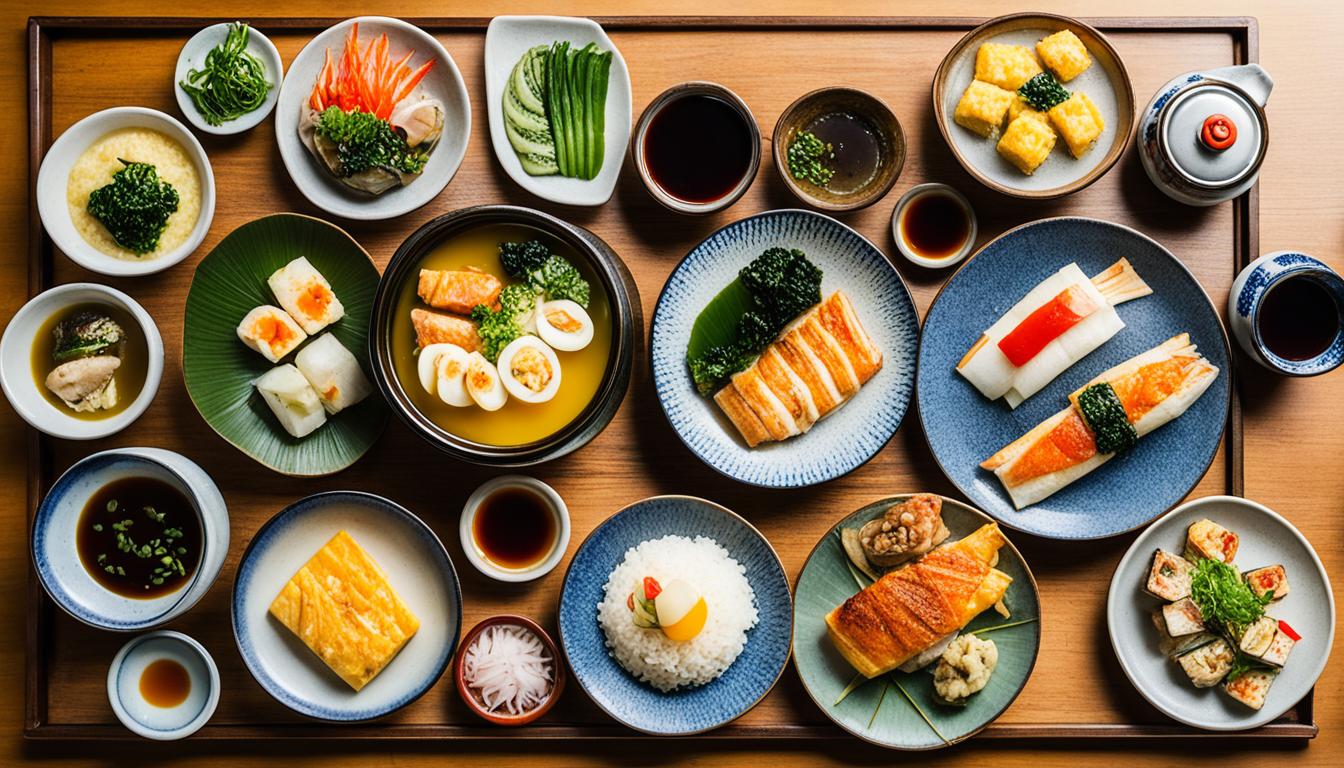Ever wondered how to make a Japanese breakfast that is both authentic and delicious? Dive into the world of traditional Japanese cuisine and discover how you can create a wholesome and nourishing morning meal that will leave you energized and satisfied. From the perfectly steamed rice to the comforting miso soup, we will guide you through the essential components and easy recipes to help you experience the true flavors of Japan.
Components of a Traditional Japanese Breakfast
When it comes to a traditional Japanese breakfast, there are several key components that make it a satisfying and well-rounded meal. These dishes not only provide a burst of flavor but also offer a balance of essential nutrients. Let’s dive into the core elements of a traditional Japanese breakfast:
-
Gohan (Steamed Rice or Porridge)
A staple in any Japanese meal, gohan refers to steamed rice or porridge. It serves as the foundation of a traditional Japanese breakfast, providing a rich source of carbohydrates and energy to start the day. The fluffy texture of steamed rice or the comforting warmth of porridge complements the other dishes perfectly.
-
Shiru (Miso Soup)
Miso soup is a soul-warming dish that typically accompanies a Japanese breakfast. Made with fermented soybean paste, dashi (broth), and an array of flavorful ingredients like tofu, seaweed, and green onions, miso soup delivers umami flavors and a boost of protein to the meal.
-
Okazu (Main Dish and Two Side Dishes)
The okazu consists of a main dish and two side dishes that offer a variety of flavors, textures, and nutrients. The main dish can range from grilled fish, tamagoyaki (rolled omelet), or teriyaki chicken. The side dishes often include stir-fried vegetables, chilled tofu, or simmered kabocha squash. This trio of dishes creates a harmonious balance on your plate.
-
Kouno Mono (Pickled Vegetables)
No Japanese breakfast is complete without kouno mono, which refers to pickled vegetables. These tangy and refreshing accompaniments add a burst of flavor and provide additional micronutrients to the meal. Common pickled vegetables include takuan (pickled daikon radish), umeboshi (pickled plum), and tsukemono (assorted pickles).
-
Additional Items
In addition to the core components, a traditional Japanese breakfast may also include seasoned seaweed (nori) for added umami, as well as natto, which are fermented soybeans packed with probiotics. These optional additions enhance the overall flavors and nutritional profile of the meal.
By combining these components, you can create a truly authentic Japanese breakfast that satisfies both your taste buds and nutritional needs. Whether you prefer a simple spread or a more elaborate feast, experimenting with different dishes and flavors will ensure a delightful culinary experience.
How to Make a Traditional Japanese Breakfast at Home
Making a traditional Japanese breakfast at home is easier than you might think. While it may seem like an elaborate spread of dishes, there are several tips and shortcuts you can take to simplify the process. Customization and improvisation are key, allowing you to use leftovers and freezer foods to save time and reduce waste.
You can create a simple Japanese breakfast using basic ingredients commonly found in your pantry. Start with the essential component of rice, which can be cooked fresh or use leftover rice from the previous day. Choose a protein like fish or eggs as the main dish, and prepare a simple miso soup using miso paste, dashi stock, and your choice of veggies.
In addition, include vegetable side dishes such as sautéed greens or marinated cucumbers, and pickled vegetables to add acidity and balance to the meal. Complete your homemade Japanese breakfast with seasoned seaweed, natto, and a cup of hot green tea to enhance the authentic flavors.
By following the structure and tips provided, you can easily put together a traditional Japanese breakfast with ease and speed. Enjoy the simplicity and nourishment of this homemade Japanese breakfast, and start your day on a wholesome note!
